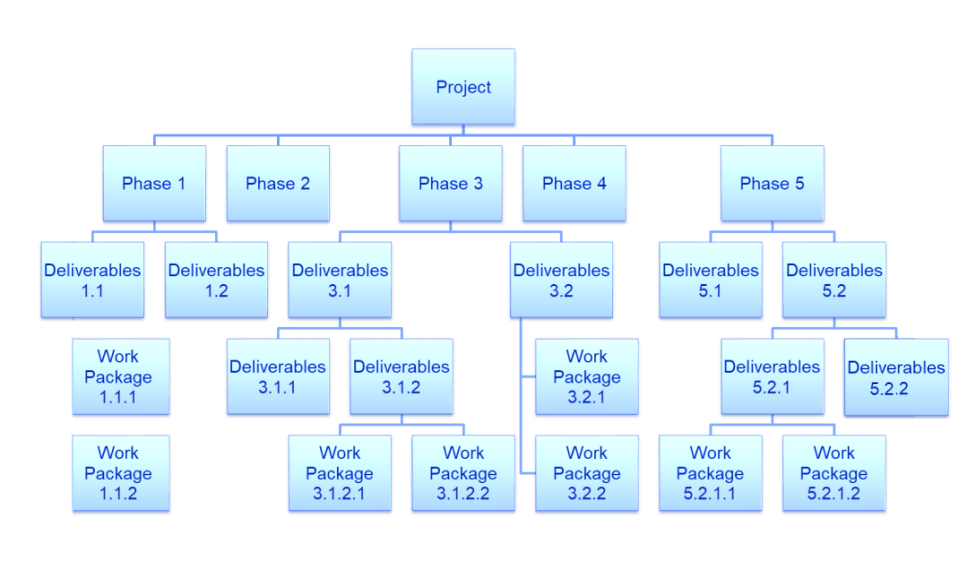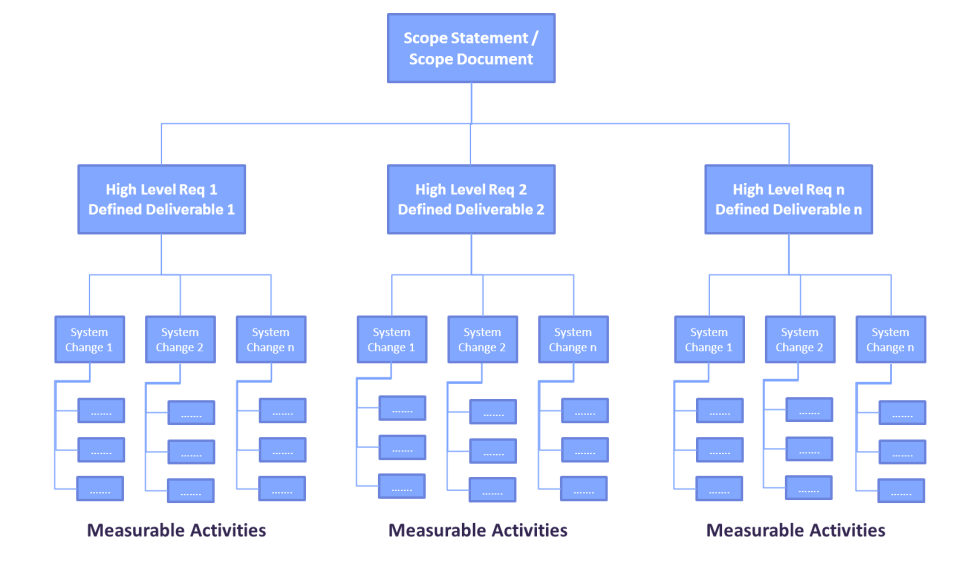Project Management Guide
Project Management Guide
What Is Project Management?
What Is a Project?
Why Is Project Management Important?
Project Life Cycle Phases
- Project Initiation
- Project Planning
- Project Execution
- Project Monitoring
- Project Closure
Project Management Methodologies
- Waterfall Project Management
- Critical Path Method
- Critical Chain Project Management
- Agile Project Management
- Scrum Project Management
- Kanban Project Management
- Lean Project Management
- Six Sigma Project Management
- PRINCE2
- PRiSM
- PMBOK Method
Project Management FAQ
What Is a Work Package in Project Management?
Whether you are studying for a PMP certification exam or employing project management principles in real life, you would have frequently come across the term “work package.” It plays a crucial role in defining the scope of the project while also managing the cost and duration. So what is a work package exactly? Let us take a closer look.
What is Work Package?
To better understand a work package, one first needs to understand Work Breakdown Structure (WBS).
To summarize the definition in Project Management Institute’s Project Management Body of Knowledge (PMBOK), Work Breakdown Structure is the hierarchical decomposition of an entire project into smaller, manageable tasks. The division of the project to the lowest level of deliverables gives rise to work packages. Hence, they are also called the terminal ends of a WBS.
In simple words, a work package is the smallest unit of a project, and as such, can be considered as a mini-project. It contains a group of related tasks, which may be clubbed on the basis of the deliverables, technology, skills, geographical area, and other such factors.
Why are Work Packages Important?
One of the primary advantages of work packages is quite obvious – it grants the project managers granular control over the assignment and its scope.
Following are some more benefits of work packages in project management:
Scheduling and Budgeting
Work packages are effectively a collection of tasks and activities. When arranged logically, package owners can assess the cost and duration of the particular unit. The aggregated sum of all these cost and duration estimates helps project managers measure, manage, and control the project.
Quicker and Easier Estimates
Project managers or package owners can calculate the direct cost of labor, material, equipment, etc., along with the indirect costs associated with every task. The same applies to resource utilization and timelines. These finer details available at a smaller scale offer a more realistic overview of the project.
Concurrent Activities
Work packages allow the project managers to make effective use of resources while working on different components of a project simultaneously. This parallel operation gives rise to greater productivity where all team members follow the task/activity list for the given work package and complete them by the specified deadline.
Outlines Interdependencies
When implemented correctly, interdependencies could be your greatest asset or the biggest obstacle. Quite often, the inefficient allocation of shared resources or interdependent tasks accounts for inordinate delays. As work packages highlight any interdependencies, project managers can spot opportunities for parallel operation, priority-based resource assignment, and scheduling.
Granular Control
Typically, every work package has a single owner for reporting purposes. This appointed head is responsible for managing the work package at the task and activity level. Such control is vital when dealing with high-risk projects, where risk can be averted at the grassroots level. The framework also offers the upper management and stakeholders a bird’s eye view of how the project is being managed.

Measure and Manage Achievements
Completing a work package, touching key milestones, or simply monitoring the progress can bring the project team together and keep them engaged throughout the process. Displaying incremental accomplishments can also boost their morale.
Additionally, project managers can also measure the work package performance through metrics like Earned Value Measurement, Cost Variance, Cost Performance Index, Schedule Variance, Schedule Performance Index, etc., to manage them better.
How to Prepare an Effective Work Package?
While project decomposition is an effective technique, it is also a dual-edged sword. Dividing the work packages at greatly minute levels can be counterintuitive and wasteful. It can also contribute to project complexities and hamper with its flexibility.
As a result, here’s what you need to bear in mind while creating work packages:
- Creating work packages is a team effort. Hence, get all the project team members in the loop while preparing a work breakdown structure and defining the work packages.
- To prevent the over-decomposition of the project, follow the 8/80 rule stating that an ideal work package should not require less than 8 hours or more than 80 hours for successful completion.
- The project manager and team members must be satisfied that the decided-upon level of detail lends enough clarity for the team to proceed with the subsequent activities.
- The work package should be capable of sharing insights into the cost and duration of the project.
- Each work package should be unique and must not repeat elsewhere in the WBS.
- Work packages must be assigned to a single team leader or a group of individuals who are accountable for managing the work package.
- It is not necessary that all work packages would be at the same level. Work packages can lie at any WBS hierarchical level, and project managers should not force these to bring them at par.
Work Package vs. Activity
Practically, the terms “work packages” and “activity” may come into use interchangeably. However, from a PMP certification exam perspective, it is crucial to understand the difference between the two.
An activity is a set of tasks that needs to be completed within a said duration. These are generally stated as a verb and a noun. A work package is a compilation of such related activities. While activities involve the action of multiple individuals, the responsibility of a work package lies with a single individual, that is, the package owner. Furthermore, work packages revolve around a tangible, indivisible deliverable. In contrast, an activity cannot deliver an outcome or a finished product to fulfill the project’s objectives.
While we are on the topic, it also bears mentioning the difference between work packages and planning packages.
Planning packages are essentially work packages that are set aside for the future. These include the components that will be worked on in the future, and while their scope and deliverables are known, the assignment is either scheduled or yet to be done. Project managers can unpack planning packages into activities and compose them into work packages.
Examples of Work Packages
Let us understand the concept of work packages through some common examples:
WBS: Build a House
1. Constructing a House
I. Primary Structure of a House
a. Developing the Foundation
1. Topographical survey of the area
2. Creating a foundational layout
3. Excavations
4. Concrete pour
b. Building the External Walls
c. Developing the Roof
II. Electrical infrastructure
a. Mapping
b. Wiring
c. Fitting terminals
III. Plumbing infrastructure
a. Create piping layout
b. Fit the fixtures
c. Check the water pressure
IV. Interior development
a. Building walls and features
b. Finishing – such as painting, etc.
c. Furnishing
Here, the lowest level of standalone processes, such as pouring the concrete, or fitting the electrical terminals, or checking the water pressure form the work packages. These work packages are a collection of related activities.
For instance, pouring the concrete first requires mixing the concrete, securing the excavated area, pouring the concrete, and letting it rest to form the foundation. It also highlights the interdependence that unless the excavation is carried out, it is not possible to pour the concrete.
Conclusion
Work packages form the basic building block of any project. As a result, a successful project is the culmination of various successful work packages. Project managers can exploit this breakdown to their advantage and deploy fine-tuned control and management to derive results!
